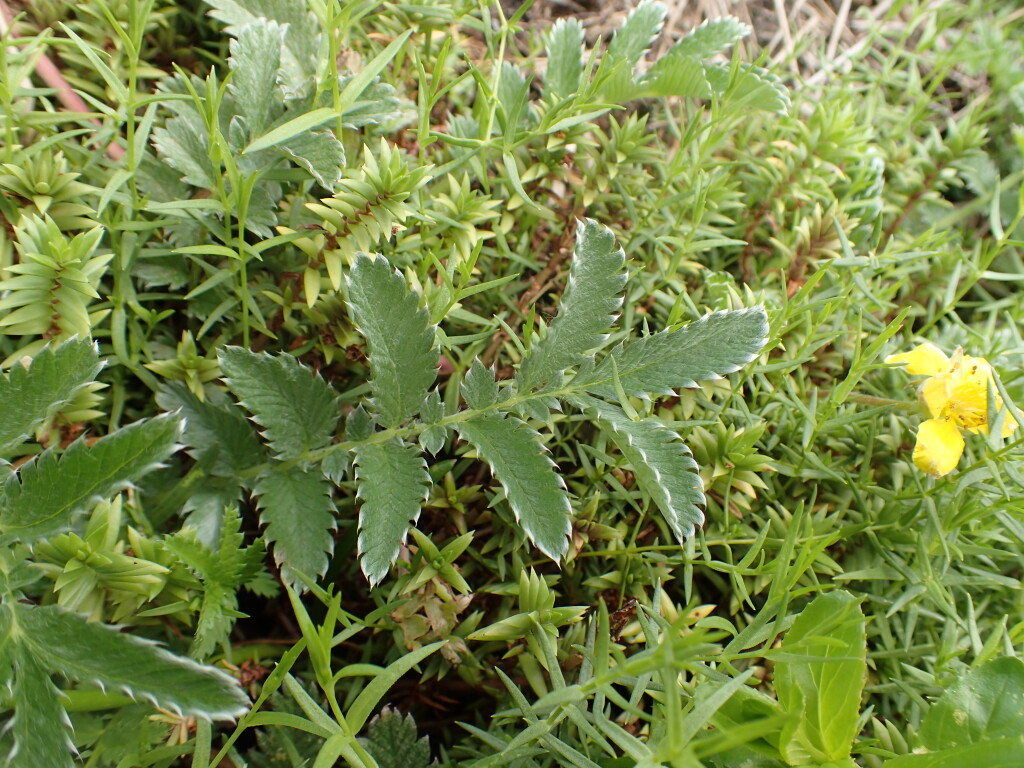Argentina anserina
(L.) Rydb.Stoloniferous perennial herb, to 30 cm high; stems reddish-brown with spreading white hairs. Leaves in basal rosette, imparipinnate, 5–25 cm long; leaflets 7–21, alternate along rhachis, oblong to ovate, 0.5–3.5 cm long, 3–15 mm wide, hairy on both surfaces, densely silvery-hairy below, margins toothed; petiole with spreading pale hairs; stipules 1–1.5 cm long, brown, papery. Flowers solitary, axillary, on peduncles 5–30 cm long, equal to or longer than leaves. Epicalyx lobes narrowly triangular, c. 0.5 cm long, silvery-hairy on outer surface; sepals lanceolate, as long as epicalyx lobes, silvery-hairy; petals yellow, obovate, c. 1 cm long. Fruit enclosed by epicalyx and sepals, c. 1 cm wide. Flowers Nov.–Mar.
GleP, Brid, VVP, GipP, WaP, CVU, DunT, WPro. Also SA, NSW, Tas. Occurs mainly on basaltic soils, often amongst basalt boulders and along roadsides in cool, moist districts in the south-west of the State, with isolated populations near Tarwin Lower.
Bean, Muelleria 33:75–83 (2015) argues that this species should be regarded as native, in contrast to the conventional view, in Australia. Its somewhat restricted occurrence in Victoria and the very early date of its first collection in Australia (1804) provide evidence for this view. A related species, Argentina anserinoides (Raoul) Holub, is endemic in New Zealand.
 Spinning
SpinningSynonyms
Bean, A.R. (2015). Notes on Potentilla (Rosaceae) and related genera in Australia.. Muelleria 33: 75–83.

